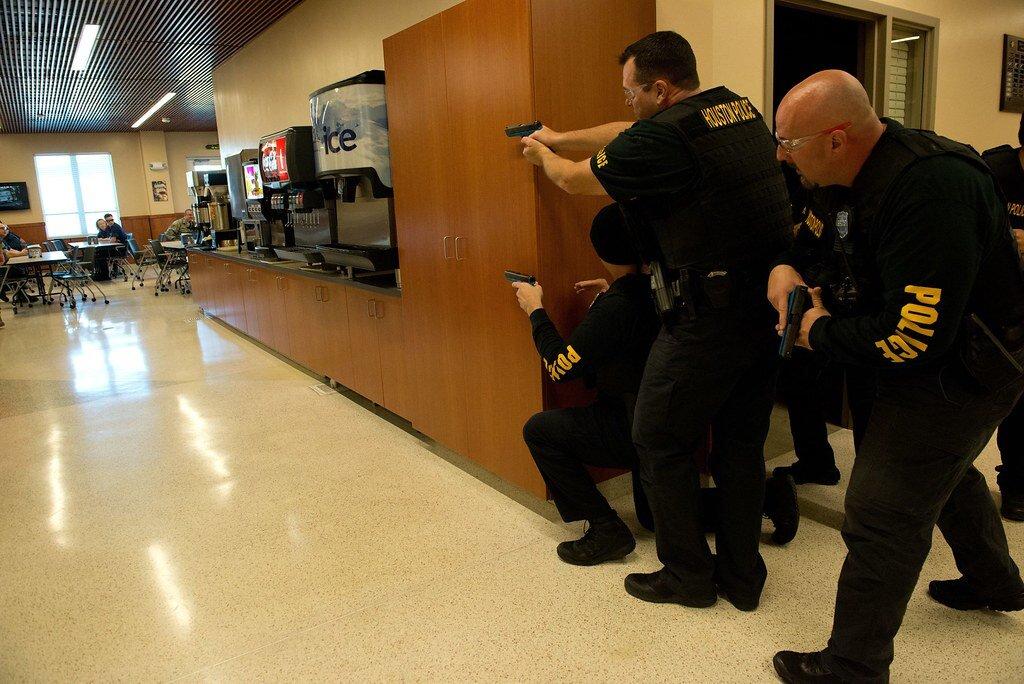Haste for preparedness and a ready-mindset has swept the nation as school shootings are on the rise. With the implementation of realistic active shooter drills, K-12 campuses everywhere are going to great lengths to make sure their students are ready for an attack. However, the effectiveness of these drills over the observable trauma they are causing amongst participating students and faculty are currently under major speculation.
At the forefront of this controversy are the two biggest education associations; the American Federation of Teachers, and the National Education Association. The unions are joined by the group Everytown for Gun Safety. Together, these associations gathered stories of drills that overstepped the boundaries of participants from across the country, and they are calling for an end to live drills that involve student participation.
What they found is that due to loosely defined state statutes, some school administrations created simulation-like circumstances that proved to be traumatic for its participants. According to their report on The Impact of School Safety Drills For Active Shooters, “During a drill at Meadowlawn Elementary School in Monticello, Indiana, law enforcement officers lined teachers up and “shot them” with an airsoft rifle. Pellets left welts and caused panic.” To the same degree, they also report that “at Lake Brantley High School in Altamonte Springs, Florida, chaos ensued after a `Code Red Drill’. Students were not told the exercise was a drill.
Although some lockdown procedures can be traumatic, first-year transfer student Melanie Sanchez recalls the hysterical day three shots were believed to be fired in the library at her former community college in Chula Vista, “I was sitting out on a patio finishing up a last-minute assignment when I started to notice people were running. Everyone was screaming and I had no idea what was going on. I tried to ask people what was happening but everyone was moving too quickly and that’s when I heard someone scream out ‘active shooter’!” Melanie grabbed what she could and took off with the crowd. She was then quickly called into a nearby classroom. A professor shut the door behind her and turned off the lights, and Melanie said, “That’s when everyone’s phones started going off. We all got a text from Southwestern administration confirming that three shots were fired.”
Melanie hid in that classroom for over an hour before another text was sent out, clarifying that there were no shots and that the sounds came from construction that was taking place outside of the library. “It was pretty chaotic. Staff instructed us to lay down in a building with huge windows,” she remembered, “There were people running and screaming and most didn’t know why they were running, or where they were going, they just followed the crowd.” With no prior active shooter trainings on campus, Melanie believed students and faculty were overwhelmingly unprepared.
Director for Emergency Services at SSU, Missy Brunetta, believes that even just a little bit of thought put into how you might respond to an emergency can make a world of difference. Which is why Brunetta will be leading two different active shooter response trainings on campus. They will be held on Wednesday, Feb. 19, and Friday, Feb. 21, from 11 a.m. to noon in the Sonoma Valley Room located in the Student Center.
These response trainings are very different from simulation-like drills. They are designed to get people thinking about how they might utilize their surroundings to either effectively run, hide, or fight. Brunetta says that they will not be practicing these techniques during the training but more or less discussing it in a classroom setting. “I think there is the most value in providing the opportunity to take people through environments where they live, learn, and work and discuss where they may run or where they may hide to provide the chance to reveal strengths and weaknesses in various places.,” Brunetta said.
Students can expect these topics to be discussed; What/who is an active shooter? How will you know something is happening? Run – where to go. Hide – what makes a good lockdown location. Fight – what makes good improvised weapons. Police response – what to expect. If students cannot make it to the training sessions they are heavily advised to watch the CSU Active Shooter Training Video for Sonoma State, available at http://web.sonoma.edu/risk/emergency/active_shooter.
According to the pensive voice in the SSU video, “The time to look for places to hide is not after the shooting has begun, it is now.”.





![[Both photos courtesy of sonoma.edu]
Ming-Ting Mike Lee stepped in as the new SSU president following Sakakis resignation in July 2022](https://sonomastatestar.com/wp-content/uploads/2024/04/CC4520AB-22A7-41B2-9F6F-2A2D5F76A28C-1200x1200.jpeg)


























